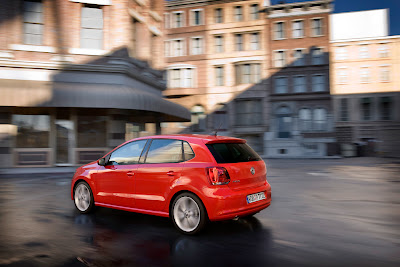Flex fuel cars cannot deal with E100, or else, with 100% of ethanol. Either they use E85, with 15% of petrol, or they use a small fuel tank that holds a small quantity of petrol for the car to start in the morning. Things are like this since the first ethanol-powered production vehicle, Fiat 147, has been presented, in May 1979. After 30 years waiting to get rid of this small tank, car buyers will finally be able to do so with the help of Bosch and Volkswagen, which have presented today the Polo E-Flex.

The new car, a special series that will be sold from the end of this month on in Brazil, is based on the fourth generation of Polo. The current car will be sold in the South American country at least until 2010, when the fifth generation is expected to start production and replace it.
But let's get back to what really matters: the E-Flex system. It works by heating ethanol to up to 120ºC, what makes its combustion easier. With this, it will be able to start a car fueled solely on ethanol in temperatures as low as -5ºC.
The car works like this: first of all, the driver turns the key to the "on" position. On the dashboard, a light that indicates the heating process is in action, similar to the one that exists on diesel vehicles. When it goes out, it is the sign to start the engine, but you have to press the clutch pedal first. If you don't follow the steps, the car just does not start and the ignition prevents you from turning the key again. You'll have to turn the car off and start all the process once more.
Besides making sure the car starts quickly, the E-Flex system also keeps it running in a smoother way by working for 120 s more. This is the time the engine takes to heat and to work in its best way. In regular flex fuel cars fueled with ethanol, accelerations are not very steady when the engine is still cold.
The E-Flex system now tends to be perfected and used in other countries, colder than Brazil, in order to allow these places to make use of E100 in a regular way, just like the South American country does since 1979. A big achievement for the Brazilian engineers involved in the development of E-Flex.














 Source:
Source: Volkswagen and Bosch
























































